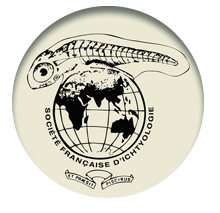Occurrence of a freshwater pipefish Pseudophallus cf. brasiliensis (Syngnathidae) in Corantijn River, Suriname, with notes on its distribution, habitat, and reproduction
How to cite: Mol, J. H. (2012). Occurrence of a freshwater pipefish Pseudophallus cf. brasiliensis (Syngnathidae) in Corantijn River, Suriname, with notes on its distribution, habitat, and reproduction. Cybium, 36(1): 45-53. https://doi.org/10.26028/CYBIUM/2012-361-005
Twelve small (< 7.5 cm TL) specimens of the pipefish Pseudophallus cf. brasiliensis were collected at three localities in the Corantijn River, Suriname, at distance >155 km from the river mouth, i.e., in fresh water. Of these, nine were from Sand Landing, a sheltered beach immediately downstream of a bend in the river, characterized by medium to low current velocity, mixed bottom substrate, and presence of a meadow of dwarf Amazonian sword plant H. tenellum. Newborn and adult pipefishes exhibited benthic behaviour, and may find food and shelter against currents and predators among H. tenellum leaves. Sex-role reversion was suggested by the sex-ratio of the Sand Landing specimens and by a difference in colour pattern between the sexes with females showing a vivid, striped colour pattern and males having a brownish colour: P. cf. brasiliensis may live in a sex-role reversed harem structure with territorial females competing for males that brood their eggs. Pregnant males were collected under low, high, and intermediate water level conditions, suggesting year-round reproduction. In captivity, three males released approximately 20 newborn each. Males showed no intraspecific aggressive behaviour and accepted Artemia nauplii as food. In Corantijn River, P. cf. brasiliensis occurred in low densities. Taking into account the relatively large pipefish catch per unit effort at Sand Landing as compared to CPUE at other sampling locations, the Sand Landing site is hypothesized to host a source population, an aspect that highlights the need to protect that site.


